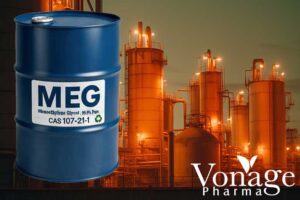The growing prevalence of opioid dependence and the continued demand for effective medication-assisted therapy have placed methadone powder at the center of pharmaceutical discussions across Southeast Asia. With a focus on dosage forms, regulatory frameworks, and the dynamic ASEAN market, this guide presents insights and opportunities for pharmaceutical providers and highlights product options such as Methadone HCl, Methadone Hydrochloride 5 mg, Methadone Hydrochloride 20 mg, Methadone Hydrochloride 40 mg, and Methadone Oral Solution 25 mg/5 ml available to support treatment expansion.
Methadone Powder and ASEAN: A Market Overview
Methadone powder has emerged as a vital active pharmaceutical ingredient (API) for compounding various dosage forms, including tablets and oral solutions, specifically tailored for opioid substitution and pain management therapy. The ASEAN Drug Monitoring Report 2022 highlights that opioid-related disorders continue to affect millions across the region, with opiate/opioid users comprising around 15% of all individuals treated for drug use problems in ASEAN member states in 2022. Malaysia reported the highest number of opioid treatments, with significant proportions also observed in Thailand, Myanmar, Singapore, and Lao PDR. (ASEAN)
Demand for methadone powder and its finished products has grown steadily due to:
-
Increasing rates of opioid misuse, with over 567,609 drug users treated in ASEAN in 2022 alone.
-
National harm reduction strategies promoting methadone as a gold-standard treatment for opioid dependence and to prevent HIV transmission.
-
Rising uptake of medication-assisted therapy, exemplified by the emergence of new clinics in urban and rural centers.
These trends underscore the rapid expansion of the methadone market and the critical role of compliant methadone powder formulations in supporting public health.
Dosage Forms: Powder, Tablets, and Oral Solutions
Pharmaceutical providers rely on methadone powder as a base ingredient for the creation of various dosage forms:
-
Tablets: Common strengths in the ASEAN region include 5 mg, 20 mg, and 40 mg tablets, used for flexible dosing protocols and long-term maintenance. (ASEAN)
-
Oral Solutions: Methadone powder can be reconstituted into stable oral solutions such as 25 mg/5 ml, preferred in clinical settings for dose flexibility and ease of administration for patients who cannot swallow tablets.
-
Compounded Forms: Some providers compound personalized doses at hospital pharmacies, especially for pediatric or elderly populations requiring non-standard doses.
The combination of powder’s stability in transport and its ease of compounding makes it ideal for scalable public health responses in resource-limited and diverse regulatory environments.
ASEAN Regulatory Environment and Market Access
ASEAN member states regulate methadone powder under controlled substance frameworks, with licensing and batch traceability essential for import, export, and domestic distribution. Regulatory best practices include:
-
Product Registration: Methadone formulations must undergo stringent product registration with national regulatory authorities such as Malaysia’s NPRA and the Thai FDA.
-
Secure Supply Chain: Traceable importation records and periodic audits are mandated to ensure product integrity and prevent diversion or counterfeit supply. (npra)
-
Storage and Security: As a controlled substance, methadone requires secure storage facilities with strict inventory and dispensing protocols.
-
Provider Education: Training for health professionals and pharmacists on the safe handling, preparation, and administration of methadone powder and solutions is increasingly prioritized.
These frameworks help standardize supply, ensure therapeutic consistency for patients, and reduce risk for providers.
Market Statistics: Treatment Demand and Trends
The ASEAN Drug Monitoring Network reports that while amphetamine-type stimulants account for the majority of drug treatment admissions, opioid and opiate treatments represent a critical and growing segment:
-
15% of treated drug users across ASEAN in 2022 were opiate/opioid users, translating to more than 85,000 people receiving opioid-related treatment. (ASEAN)
-
Methadone is the primary medication for these patients, with ongoing expansion into new territories, reflecting the increasing acceptance of medication-assisted therapies.
-
The pandemic and associated supply chain disruptions had only a modest effect on the demand for methadone, which remained resilient due to essential healthcare status and the rise of telemedicine and take-home dosing models.
The stability and clinical flexibility of methadone powder contribute directly to its appeal among national health systems, NGOs, and private providers.
Product Options for Providers
Leading pharma sources now offer methadone powder as both an API and in finished dosage forms. Providers can source:
-
Methadone HCl for hospital compounding and bulk supply.
-
Methadone HCl 5 mg, Methadone HCl 20 mg, and Methadone HCl 40 mg tablets for pharmacy-based dispensing and titration.
-
Methadone Oral Solution 25 mg/5 ml for flexible clinical use and individualized care provisioning.
Offering a spectrum of formats ensures both compliance with ASEAN regulatory regimes and optimal adaption to patient needs.
Access Strategies: Overcoming Supply and Distribution Hurdles
To unlock new markets and improve methadone powder access in ASEAN states, manufacturers and providers should:
-
Leverage local regulatory partnerships for quicker market entry and distribution channel expansion.
-
Support training and technical assistance for compounding pharmacies and clinical staff.
-
Collaborate with ministries of health to optimize stockpiling and reordering systems amid fluctuating supply.
-
Invest in tamper-evident, serialized packaging to combat counterfeiting and support regulatory traceability.
Such approaches not only improve product security but also build trust with national authorities and healthcare partners.
Conclusion
The methadone powder market in ASEAN is entering a growth phase, driven by rising need, expanding regulatory frameworks, and a wider spectrum of dosage forms and supplier options. Consequently, providers can now access an array of standardized products. These range, for example, from powder and tablets to tailored oral solutions. This empowers them to meet their patients’ needs. It also supports broader public health objectives. By adopting the latest market access strategies and adhering to evolving ASEAN regulations, pharma stakeholders can play a pivotal role in addressing opioid dependence and shaping a healthier future for Southeast Asia. (npra)







